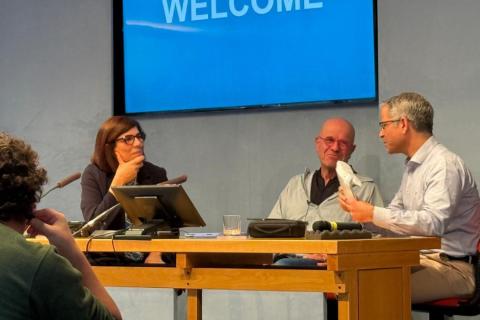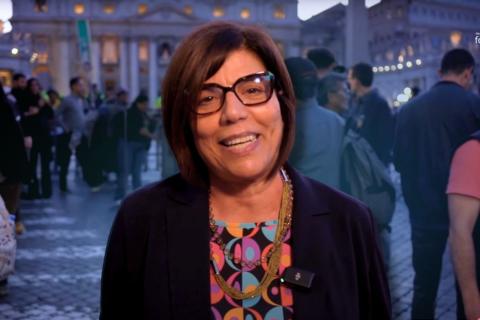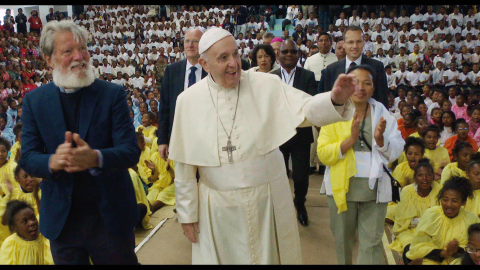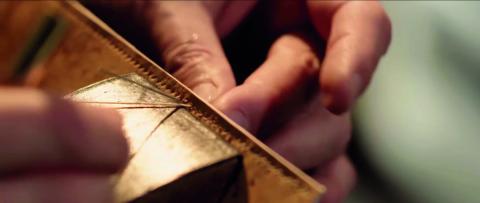
Photo by Jacek Dylag on Unsplash
On a scale from 1 to 10, I’d rate my sense of direction a minus 10. Finding my way in new cities is a nearly impossible task for me. Google maps have helped this issue a little bit, but I still manage to get lost.
A few days ago, on a very dark and very rainy morning, I drove my sister and my 8-year-old niece to Dublin airport. They had to catch a flight back to Vienna. Once again, I managed to get lost.
As I was beginning to realize my predicament, I realized that the new route calculated by Google would lead us through Dublin city center and not via the much easier ring road. I started to get anxious about the rush hour traffic and wondered whether we should turn back.
I pulled over, looked at the map on my phone and somewhat panicky said to my sister, “Should we turn back or follow the map?”
My sister answered: “You decide. I trust you.”
My niece piped up from the back, “I trust you too.”
Fueled by their confidence in my abilities, I started the car again, trusting that God would be with me to navigate the early morning traffic, the toll bridges and the infamous Dublin port tunnel.
Low and behold, we arrived in time for a coffee at the airport before their departure.
Interdependence
This experience got me thinking about what trust actually is. Trusting other people is something we are born with. We don’t come into this world as independent creatures, but wholly dependent on the love and care of our parents.
As babies and young children, we generally don’t worry about shelter, food or clothes because we trust (unless we have had adverse childhood experiences) that our parents will take care of everything.
Even when we grow up and become seemingly independent in many areas of our lives, in reality as humans we are always dependent on one another. In society, we call this interdependence. At the basis of many, if not all, our interactions lies trust in other people.
For example, when we post a letter, we trust that it will arrive at its destination. When we take medication, we trust that the scientists developing it have done so responsibly. When we buy food in a restaurant, we trust that it has been prepared well.
Or think about the use of money. The reason money works when we pay for things is because people trust in its value. Trusting one another is in the best interest of both ourselves as individuals and our communities.
A predisposition to trust
So, what is it that actually prompts us to engage in an act of trust?
Neuroscientific research shows that our brains are actually predisposed to trust others. In 2015, some researchers undertook a study to look into some of the mechanisms underlying the social value of trust.
Participants of the study were under the illusion that they were playing an economic investment game with three different players: a close friend, a stranger and a computerized slot machine. In reality, they were always playing against a computer, which via a simple algorithm systematically reinforced their actions of trust, precisely 50% of the time, equally for all three presumed responders.
The outcome of this experiment showed that participants were more likely to invest with the player that they thought was their close friend. It was also evident that they trusted their close friend more than a stranger or a computerized slot machine, despite having received the same reinforcements.
This, the researchers concluded, shows humans’ inborn desire to connect with others, to trust friends and to create caring bonds.
Our brains are hardwired for this
During this study, the researchers also used brain imaging techniques to check which brain regions are involved when people engage in an act of trust. They found out that the two regions that are activated when a person thought they trusted a close friend are the ventral striatum and the medial prefrontal cortex.
The ventral striatum is a region in the center of our brain that is responsible for generating positive emotions. The medial prefrontal cortex is the part of our thinking brain, which among other tasks, is responsible for decision making and for how we perceive other people and their actions.
There is a growing awareness among researchers that these two brain regions are also major players that allow us to experience sustained psychological well-being and to regulate our interactions with other people for positive outcomes.
Working out our brains
The really interesting thing is that activity in these two brain regions can be strengthened by choice. If I decide to make time every evening to bring to mind some positive experiences I had during the day, however small, I strengthen the activity levels in my ventral striatum and so improve my well-being, my interactions with others and how I approach events in the future.
Or, when I’m trying to reframe negative experiences by mentally taking a step back and viewing the situation from another person’s point of view, or by coming up with alternative explanations for my perceptions — this strengthens the pathways to my medial prefrontal cortex and helps me develop thoughtful responses to events rather than shooting from the hip.
I realize that with this act of trust that both my sister and my niece pronounced on that rainy and dark Dublin morning, our brain’s ventral striatums and medial prefrontal cortexes were strengthened.
Through it, we created a caring connection with one other and a wonderful memory of mutual trust.
First published in New City, London












